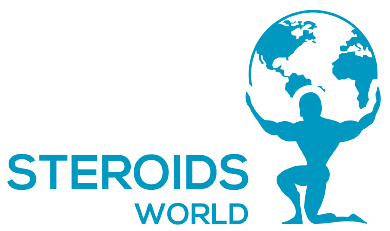A family of drugs known as anabolic steroids contains a synthetically produced version of the hormone testosterone or a comparable substance that is derived from this hormone. It is crucial to comprehend the fundamental workings of testosterone to completely comprehend how anabolic steroids operate.
The main hormone involved in the male sex is testosterone. Throughout a person’s lifetime, Leydig’s cells in the testicles produce it at different levels. The effects of this hormone are most pronounced during puberty when a rise in testosterone levels causes significant physiological changes in the male body. This involves the emergence of secondary masculine traits such as a deeper voice, an increase in body and facial hair, an increase in sebaceous gland oil production, the development of sexual organs, the maturation of sperm, and a rise in desire.
Low testosterone levels will affect how well the male reproductive system works. All these outcomes are regarded as this hormone’s “androgenic” or “masculinizing” characteristics. A higher rate of protein synthesis and other growth-promoting or “anabolic” bodily changes will result from increased testosterone production (leading to muscle accumulation). Males carry more muscle mass than females because testosterone levels in the two sexes are so drastically different. More particular, although females only create approximately 1/4mg, the mature male body will take between 2.5 to 11mg per day1. For women, oestrogen is the main sex hormone, and it has a very different impact on the body.
Women who have lower testosterone levels and greater oestrogen levels will, among other things, store more body fat, build less muscle, be shorter in height, and be more susceptible to bone thinning as they age (osteoporosis). The actual process through which testosterone causes these modifications is a little complicated.
The testosterone molecule can interact with different bodily cells while it is unbound in the bloodstream. This comprises the skeletal muscle cells as well as the tissues of the prostate, skin, scalp, kidney, bone, and central nervous system. Since testosterone requires a cellular target to perform its activity, only body cells with the appropriate hormone receptor site will be affected by it (specifically the androgen receptor). This procedure may be compared to a lock and key system, where each receptor (lock) is only opened by a certain hormone (key). The testosterone molecule will bind to the intracellular receptor site, which is situated in the cytoplasm rather than on the membrane surface, during this contact, creating a new “receptor complex.” The hormone and receptor site complex will then go to the cell’s nucleus where it will bind to a particular region of DNA known as the hormone response element.
Actin and myosin, the two primary contractile proteins, will make more of themselves in skeletal muscle cells as a result. Certain genes’ transcription will be activated as a result. Muscle tissue may store more carbohydrates because of androgen action.
After this signalling process is complete, the complex will be released, and the receptor and hormone will separate. The two are then free to return to the cytosol for more action. The testosterone molecule is likewise unrestricted in its ability to return to the bloodstream and interact with other cells. The whole receptor cycle, which takes hours rather than minutes to complete, includes hormone binding, receptor hormone complex movement, gene transcription, and eventual return to the cytosol. For instance, it takes 4 to 6 hours for activated free androgen receptors to move back to the cytosol in tests utilising a single dose of nandrolone.
The idea that this cycle also includes the splitting and formation of new androgen receptors once returned to the cytosol offers a potential explanation for the numerous reports that androgens are crucial in the development of their receptor sites. This similar mechanism enables androgens to increase erythropoiesis in the kidneys. During anabolic/androgenic steroid treatment, this action causes an increase in red blood cell concentrations and may also boost oxygen transport capacity. Due to applications or references of this effect in pharmacological literature, many athletes wrongly believe that oxymetholone and boldenone are the only substances that have this potential. In actuality, almost all anabolic/androgenic drugs stimulate erythropoiesis since this action is only connected to the activation of the androgen receptor in kidney cells.
The only major exceptions could be substances like dihydrotestosterone and certain of its derivatives,4 which exhibit limited activity in these tissues because they break down quickly when they interact with the 3alphahydroxysteroid dehydrogenase enzymes.



















